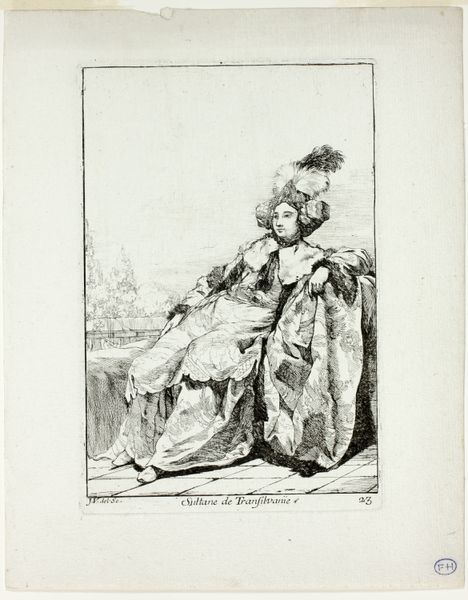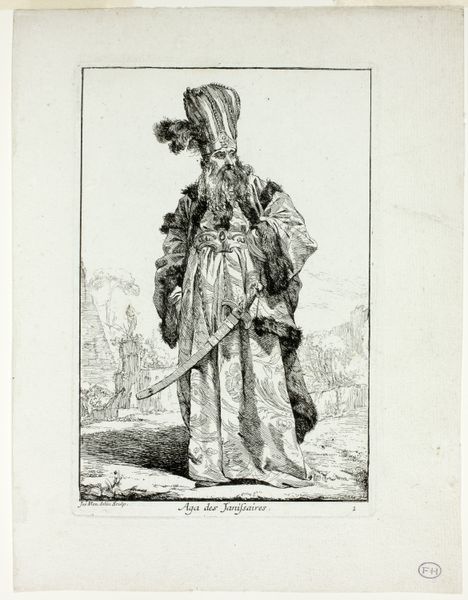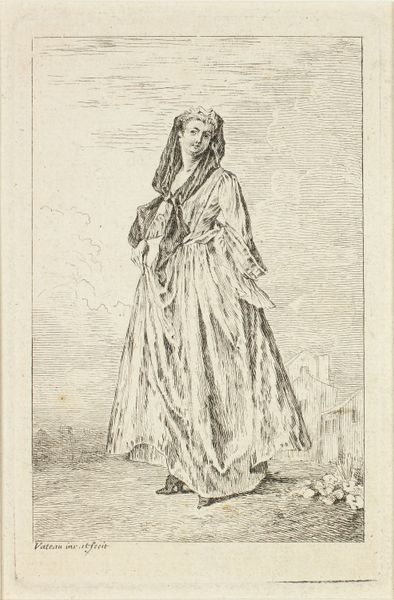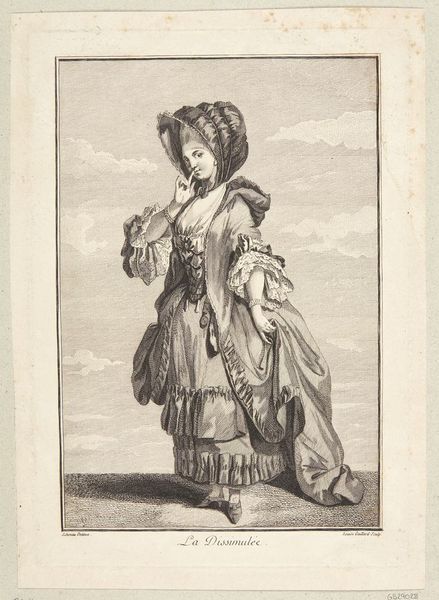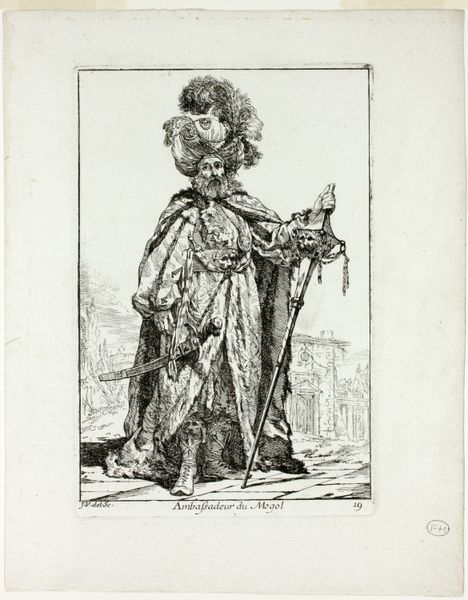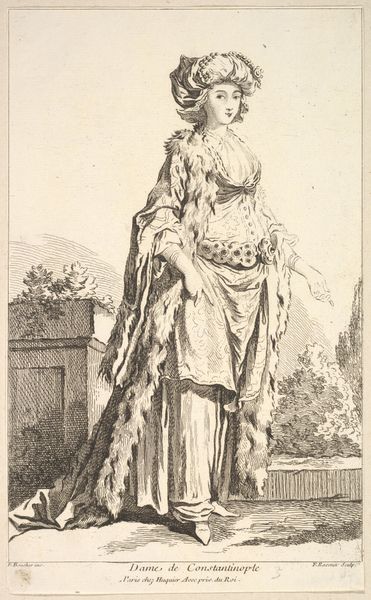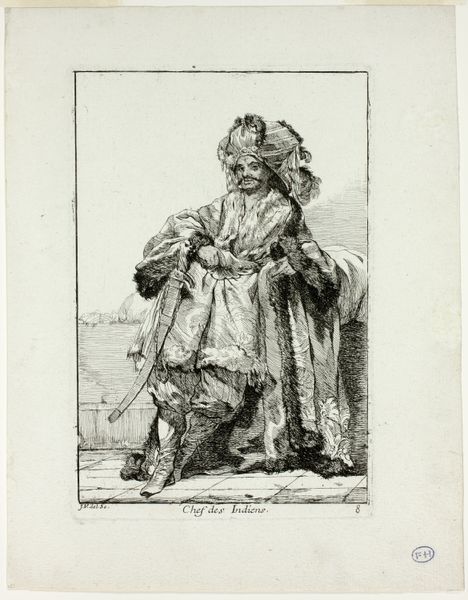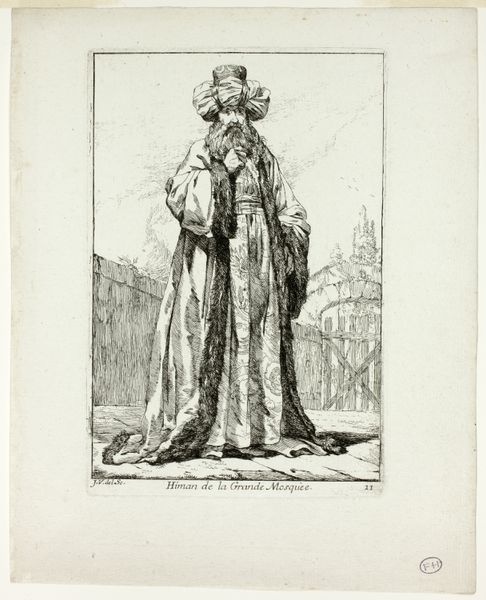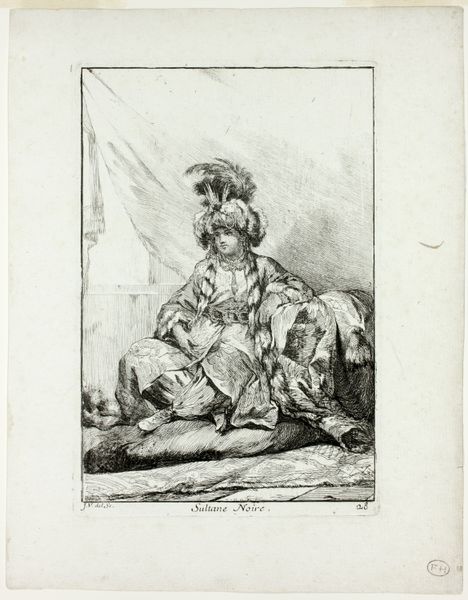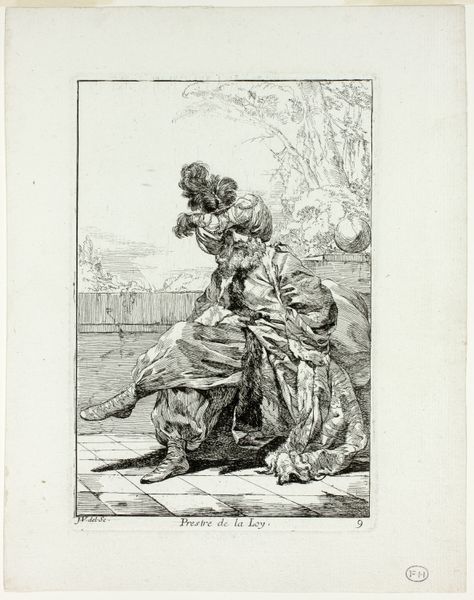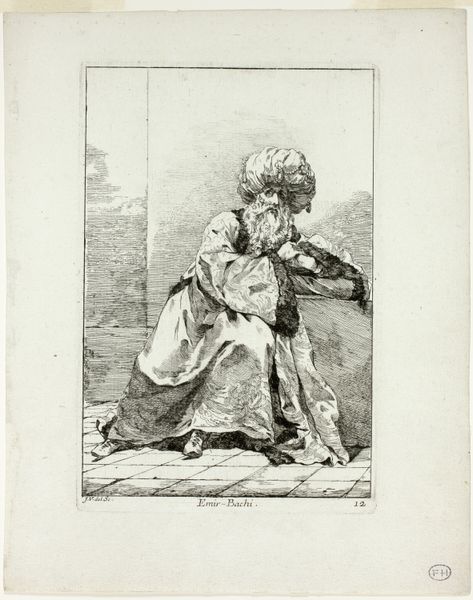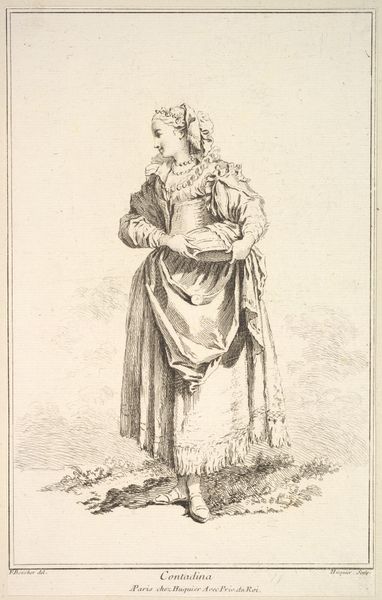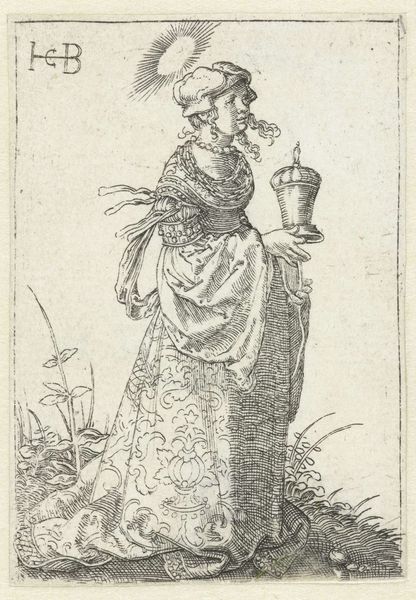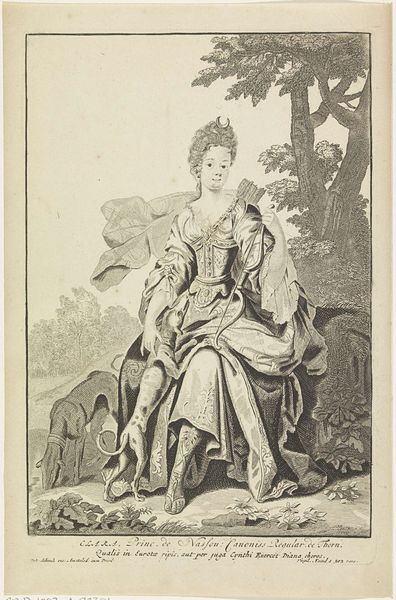
Sultane Reine, plate 29 from Caravanne du Sultan à la Mecque 1748
0:00
0:00
Dimensions: 195 × 131 mm (image); 204 × 135 mm (plate); 262 × 208 mm (sheet)
Copyright: Public Domain
Curator: Today, we're observing "Sultane Reine, plate 29 from Caravanne du Sultan à la Mecque," an etching on paper created around 1748 by Joseph Marie Vien. It resides here at the Art Institute of Chicago. What are your initial impressions? Editor: Opulence and otherness. The textures of the fur, the feathered headdress, the vaguely Middle Eastern-inspired garments...it speaks volumes about 18th-century European fantasies and projections. Curator: Indeed. Vien was part of the Romantic movement, and this print reflects the period's fascination with exoticism and idealized representations of non-European cultures. But this image belongs to a series. Can you interpret that? Editor: Exactly. This plate is part of a series documenting a "Caravanne du Sultan à la Mecque". That inherently places this image inside of a European gaze projecting orientalist ideals onto the viewer while at the same time providing commentary about how this imagery functions to elevate Western perception of Islamic identity. It’s performative. Curator: Yes, you could read it that way. Consider how the “Sultane Reine” stands centered within this seemingly foreign space that evokes both luxury and wildness. I wonder what Vien's own perception was? Editor: I think the symbolism extends beyond aesthetics. Think about the politics embedded within seemingly innocent art like this; Vien was portraying what was perceived as absolute power residing within "the other" at a moment when those structures of power in the West were on the verge of irrevocable changes. Curator: That's an interesting connection to consider within a framework of historical context. Editor: And remember this work was created with print, inherently intended to be reproduced and widely disseminated among the bourgeois classes who were developing an increasing taste for all things exoticized. This wasn't necessarily an isolated, individual vision but one catered towards that taste. Curator: It’s striking how layers of historical narrative shape our viewing experience. By drawing connections to both historical context and social conditions, we uncover some deeply resonant symbols. Editor: Absolutely. By delving into the "Caravanne du Sultan" print, it prompts us to reflect critically on the complex power dynamics at play within these seemingly beautiful representations.
Comments
No comments
Be the first to comment and join the conversation on the ultimate creative platform.
